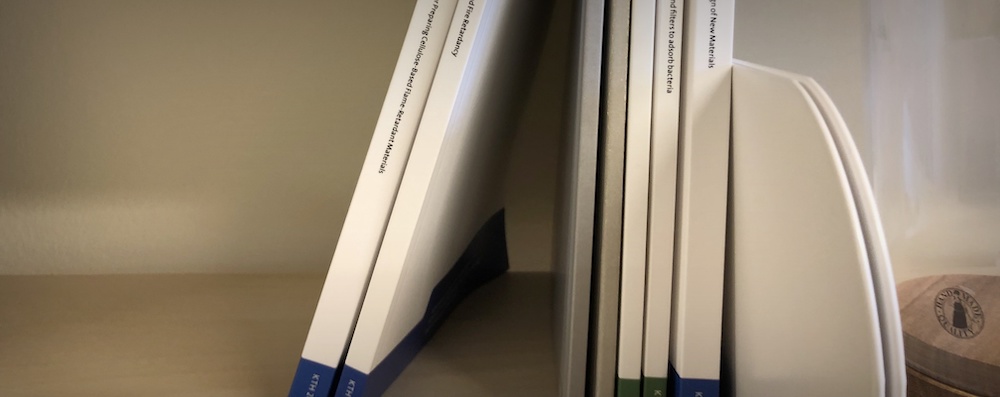
Defence of doctoral thesis: Cecilia Rydefalk – Structural and mechanical aspects in the print nip and their effect on the ink transfer in flexographic packaging printing
KTH | RISE
The defence is taking place at F3, KTH and is possible to follow online.
Opponent: Professor Ramin Farnood, University of Toronto
Supervisor: Professor Artem Kulachenko, KTH, Anton Hagman, RISE Research Institutes of Sweden and Sofia Thorman, RISE Research Institutes of Sweden
Abstract:
Flexographic packaging printing on paperboard is a simple yet complicated process. The working principle of flexographic printing is simple to understand, especially if one has done potato printing as a child. A raised pattern is cut out of half a potato, dipped in paint and pressed to a paper. The same basic principle is true for industry scale printing too. A raised pattern on a soft polymeric print plate is covered in ink. The ink is transferred by bringing the surfaces together with force. Unlike the kitchen-table version, the print speed can be in the scale of 600 m/min. And the print plate can carry detailed patterns or text that have to be rendered visually attractive and legible. In the present work the material considered in a printing context is mainly commercial liquid packaging paperboard. The type of paperboard one would find in e.g. a milk carton. The thesis explores a few aspects that affect the ink transfer in a print nip. How fast the paperboard is compressed, what happens with a non-smooth surface and how the pressure profile in the nip affects the print.
The compression of the paperboard in a print nip is many times faster than any standard method for measuring the compressive properties of paperboard. Paper and paperboard are known to be rate-dependent materials, they creep under long-time loads. Information on the material behavior under rapid compression has, however, been lacking. The present work therefore investigates what happens when the paperboard is compressed at the rate in a print nip. The main effect is seen in the stiffening of the coating layer.
A well-known way to improve the ink transfer is to increase the impression. The impression is increased by decreasing the distance between the cylinders in the print press. However, there are limits to how far increasing the impression is possible or still makes an improvement. When printing on sensitive materials and increased impression could lead to damage. The wear on the print plates is also higher with increased impression. The parts of the print that consists of raster dots will be more deformed with a higher impression, leading to a deterioration in print quality. In the present work simulations are performed where different surface roughness and material stiffnesses are combined to explore their interaction and effect on the stress distribution in rolling compression. Unsurprising, the surface roughness has the largest effect. However, since the material have a non-linear response to increased loads the lateral stress distribution changes position with increasing impression. Additionally, large hills and valleys on the bottom side of the paperboard can have an effect on the stress distribution on a smoother top-side.
Increasing the impression in a print nip is performed by bringing the cylinders in the print press closer together. The effect is that both the maximum pressure and the contact between paperboard and print plate, the nip length, increases simultaneously. The present work separates the two, and considers the print result. By increasing the maximum pressure while keeping the nip-length constant, the ink transfer to the paperboard is increased. However, by increasing the nip-length while keeping the maximum pressure constant, the ink transfer to the paperboard is decreased.
Datum
- 2024 sep 27
- Expired!
Tid
- 09:00
Mer info
Platser
KTH
Presenter

-
Cecilia Rydefalk

